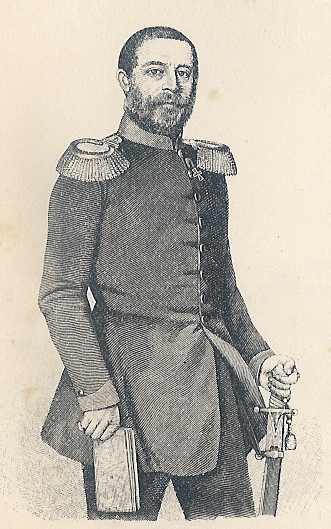
Hugh Halkett (né le 30 août 1783 à Musselburgh; mort le 26 juillet 1863 à Hanovre
Source http://en.wikipedia.org/wiki/Hugh_Halkett
Je traduirai quand j'aurai le temps.
|
|
|
Début de carrière
Halkett was born in Musselburgh, Scotland. He was second son of
Major-General F. G. Halkett and brother of Lieutenant General Colin
Halkett.
From 1798 to 1801, Halkett served in India in the Scottish Brigade,
which his father had been instrumental in raising. In 1803 as senior
captain, he joined the 2nd Light Infantry Battalion of the newly
formed King's German Legion (KGL), which was under the command of
his brother Colin. The 2nd Light were involved in the Cathcart's
expeditions to Hanover, Rügen and Copenhagen. During this time he
was promoted to major and his bold initiative on outpost duty won a
commendation.
From 1808 until 1813 Halkett fought in the Peninsular War, except in
1809 when he took part in the Walcheren Expedition. He fought at the
Battle of Albuera in Charles Alten's independent KGL brigade. When
his brother was promoted to lead the brigade, Halkett took over
command of the 2nd Light Infantry Battalion, KGL. At the Battle of
Salamanca, his battalion fought in John Hope's 7th Division. In the
Siege of Burgos campaign, he distinguished himself at the Battle of
Venta del Pozo. In 1813 he joined the new Hanoverian army. At the
Battle of Göhrde he led a brigade of Hanoverian troops in Count
Wallmoden's army. He captured a Danish standard at the action of
Sehestedt
Waterloo
At the Battle of Waterloo, Halkett commanded four battalions of Hanoverian landwehr (militia), which were sent to the front with the regulars. These units were organised into the 3rd Hanoverian Brigade of Lieutenant General Sir Henry Clinton's 2nd Division. Halkett's brigade was held in reserve on the right flank for most of the battle. After the defeat of Napoleon's Imperial Guard, the Duke of Wellington sent Halkett to pursue the disintegrating French forces. He is remembered for capturing General Cambronne while his Osnabrück Battalion engaged the French Imperial Guard.
| Unit | Commander | Number of Men | Casualties |
|---|---|---|---|
| 3rd Hanoverian Brigade | Colonel Hugh Halkett | 2,541 | 240 |
| Landwehr Battalion "Bremervörde" | Lieutenant Colonel von Schulenberg | 655 | 49 |
| Landwehr Battalion "Salzgitter" | Major von Hammerstein | 644 | 83 |
| Landwehr Battalion "Osnabrück" | Major Count Münster | 633 | 94 |
| Landwehr Battalion "Quakenbrück" | Major Baron C. W. von Hünefeld | 609 | 14 |
Après Waterloo
After Waterloo, Halkett stayed in the Hanoverian service. He rose to be a
general and inspector-general of infantry. He led a Federal Army Corps in the
First War of Schleswig (also known as the Prussian-Danish War of 1848), and
defeated the Danes at the Battle of Oeversee, a rear-guard action at
Sankelmark.
Distinctions honorifiques
Halkett held many foreign orders, including the Prussian Order of the Black
Eagle, the Pour le Mérite and the Russian St. Anne. In 1862, he was ennobled (heritable)
to a Freiherr (Baron) by King George V of Hanover
|
|
|
|
|